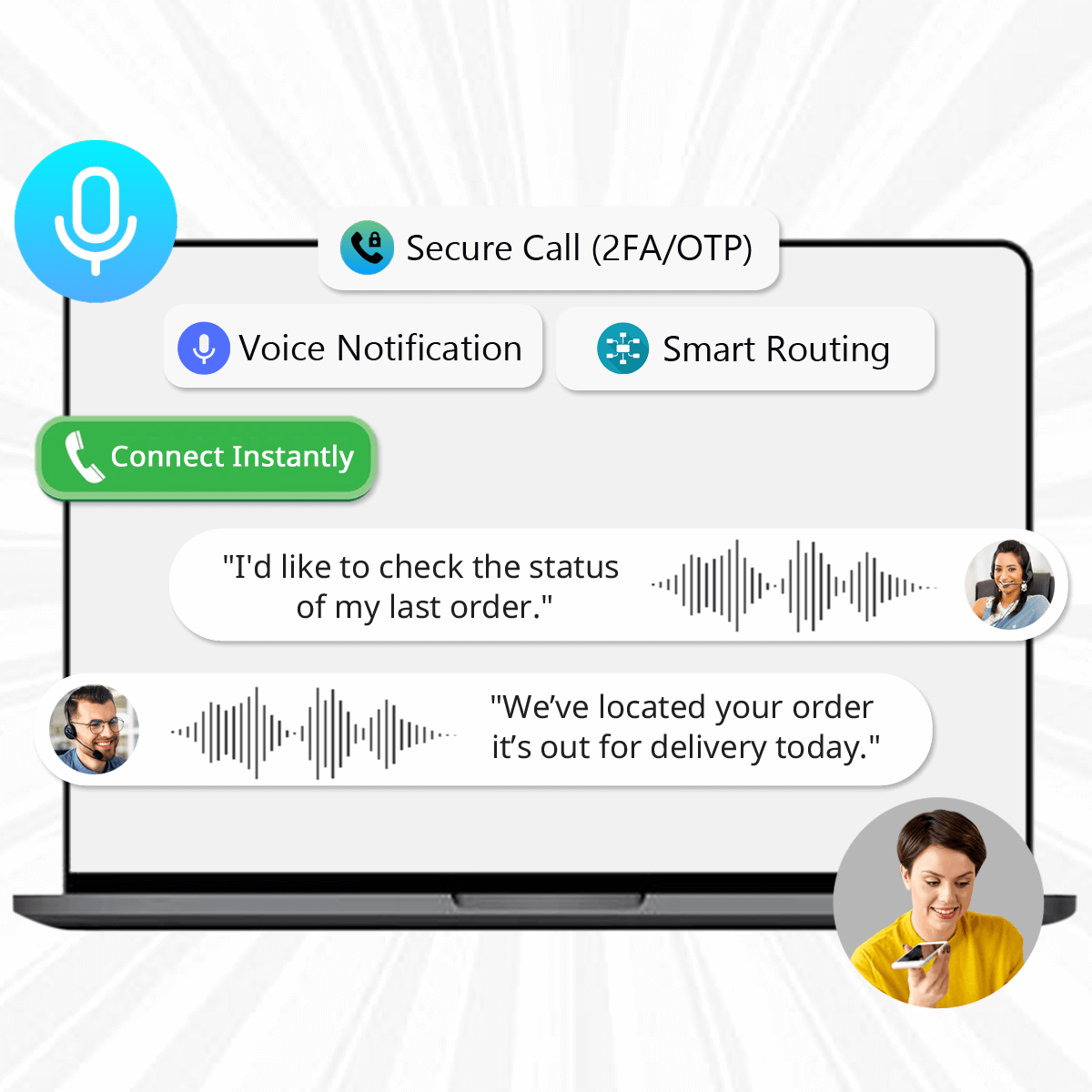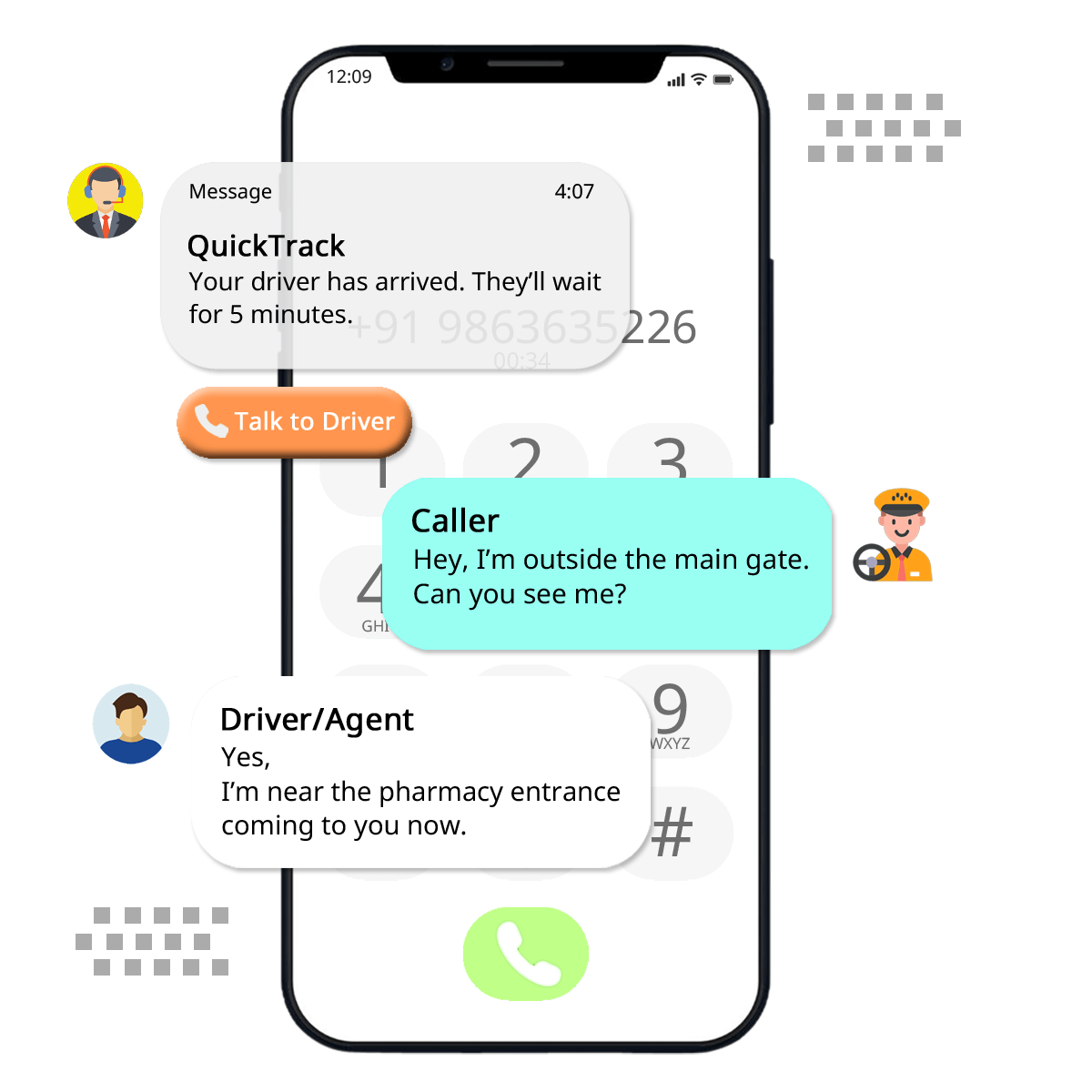+91 8929515515
Call US
Professional Voice Services for Seamless Communication

How Does Voice API Work?

Make your first call in just a few minutes!
- Create a test account – no credit card needed.
- Get your authentication credentials.
- Trigger a text-to-speech voice callout to your verified number.
- Now you can pick up your call.
- Done!
API Integraion
Real Time
Prioritize Customer Privacy
Reduce Infrastructure
Lead Generation Management
Content
Personalize Your Cloud Based Voice API
Integrating Multiple Communication Channels
Cloud-Contact Center
Outbound Dialer-OBD
Missed-Call Platform
Text-to-Speech
Virtual Number
Call Patching
White Label Platform
IVR Solution
Click-to-call
Toll-Free Number

Quick Integration
Business Transactions
Start building your email program with supporting APIs and multiple programming languages like PHP, Python, JavaScript, and more.
Customer Support
Acquire a custom brand domain and IP address to build a performance-centric email campaign for high ROI.
Automated Marketing
Get access to quality feedback and real-time tracking insights such as email logs, abuse complaints, domain authority, and current spending speed.
Schedule Events
Control and track your money expenditure without compromising campaign efficacy by monitoring the current email template.
Frequently Asked Questions
1. What functions does a cloud call center or cloud contact center system offer?
A cloud call center or contact center system offers a range of functions that enable businesses to manage their customer interactions more efficiently. These include automatic call distribution (ACD), interactive voice response (IVR), call recording and monitoring, analytics and reporting, workforce management, and more. Cloud call center systems allow agents to work remotely, and enable customers to connect through multiple channels, such as phone, email, chat, or social media. They also provide a scalable and flexible solution that can be customized to fit the needs of any business.
2. What sets a virtual number apart from a toll-free one?
A virtual number is a phone number that is not tied to a specific phone line or device, but can be forwarded to any phone number, landline or mobile. A toll-free number, on the other hand, is a phone number that customers can call for free from anywhere in the country. Toll-free numbers are usually used for customer support, sales, or marketing purposes, while virtual numbers are used for a variety of purposes, such as call tracking, international calling, or business continuity. Virtual numbers can be local or international, and can be used to establish a local presence in different markets.
3. Where can I get a virtual number that records calls?
You can get a virtual number that records calls from a reliable virtual number provider such as nexG Platforms. We offer virtual numbers that can be customized to fit your business needs, and that come with call recording and monitoring features. Our virtual numbers support both inbound and outbound calls, and can be forwarded to any phone number, landline or mobile. We also offer flexible pricing plans that suit your usage volume and frequency, and that include a range of features such as IVR, call routing, analytics and reporting, and more.
4. What distinguishes OBD and IVR from each other?
Outbound dialing (OBD) and interactive voice response (IVR) are two different functions of a cloud call center or contact center system. OBD enables businesses to automate their outbound calls, such as marketing campaigns, surveys, or reminders, using pre-recorded messages or personalized voice prompts. IVR, on the other hand, enables customers to interact with a computerized system through voice or touch-tone commands, to access information, make transactions, or route their calls. While OBD is used for outbound calls, IVR is used for inbound calls, and provides a self-service option for customers.
5. How does the click to call solution function? What is click to call?
Click to call is a web-based solution that enables customers to connect with businesses by clicking on a button on a website or app, and initiating a call to a designated phone number. Click to call uses webRTC (Web Real-Time Communication) technology to establish a connection between the customer’s browser or device, and the business’s phone system, without requiring any additional software or plugins. Click to call provides a seamless and convenient way for customers to contact businesses, and can increase conversion rates and customer satisfaction. It also provides analytics and reporting features that enable businesses to track call volume, duration, and performance.
6. Speech analytics: What are they?
Speech analytics is a technology that enables businesses to analyze and extract insights from recorded voice interactions, such as phone calls or voicemails. Speech analytics uses natural language processing (NLP) and machine learning algorithms to transcribe and categorize voice data, and to identify patterns, trends, and sentiments. Speech analytics can provide businesses with valuable insights into customer behavior, preferences, and needs, and can help them improve their products, services, and customer experience. Speech analytics can also be used for compliance and quality assurance.

